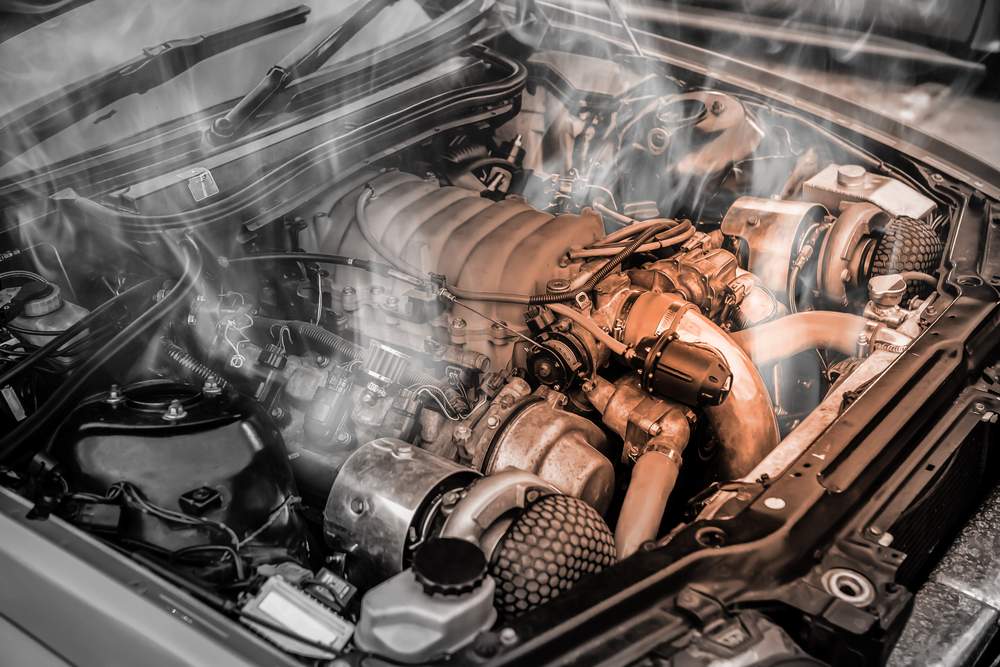Ideal Ways You Can Stop Your Car From Overheating
You may have already experienced car overheating due to soaring temperatures during the summer or while driving on steep slopes on a hot day.
Whatever the reason may be, nothing can be more stressful than being forced to stop due to an overheated vehicle. And it’s not just inconvenient; frequent overheating could cause your engine to slow or break down in the long run, leading to expensive repair work.
Engines in modern automobiles typically run between temperatures of 195° F to 220° F – you can encounter serious issues with your car if this shoots up.
So, in this article, we will point out some of the most common causes of this problem and possible solutions through which you can prevent and rectify it.
Factors That Trigger Vehicle Overheating
While hot weather and demanding road conditions can increase the chances of your car overheating, the reason could be more internal based; for instance, the root cause could be an inefficient cooling system or other factors that might be preventing heat from dissipating in the engine.
Here are some of the most common reasons why your engine overheats:
- Radiator Fan Failure
A fault in the radiator fan can be a possible cause of overheating since it has the important job of keeping the coolant’s temperature down.
Issues that can cause fan failure can be a worn-out clutch, a broken motor, faulty wiring and temperature sensor.
- Coolant Type
It is important to use the right engine coolant so it does not cause damage and corrosion to the radiator, water pump and cylinder gasket.
Mixing in different coolants and not using the right one for your car can reduce the radiator’s efficiency, resulting in an engine that overheats frequently.
- Coolant Concentration
If you keep adding water to the coolant, chances are that your engine will overheat. Hence, it’s important to maintain the right amount of coolant quantity.
- Low Oil Level
The function of engine oil is to not only lubricate the engine, but also prevent too much heat from damaging it.
- Leaking Cooling System
A leak in the cooling system can result in airlocks – dead spaces in the engine. This means that the coolant will not be able to reach these spots in the engine, causing it to overheat.
- Malfunctioning Thermostat
A faulty thermostat can affect the flow of coolant from the engine to the radiator.
- Water Pump Issues
It’s a vital part of the cooling process as it controls the circulation of coolant throughout the engine.
- Choked Radiator
Sometimes, the radiator can get clogged due to the accumulation of dirt or rust caused by old radiator fluid or a cooling system that is due to be serviced. This causes blockage to the pipes and fins of the radiator, thus decreasing its effectiveness.
- Restrained Exhaust
A bad catalytic converter can affect the car’s exhaust, not only limiting its performance but also causing excessive heat generation due to improper outflow.
Anti-Overheating Measures You Need To Adopt
As the saying goes ‘prevention is better than cure’, the easiest way to overcome this problem is to take a proactive approach.
Here are some things you should keep a regular check on to stop your car from overheating:
Ensure Optimal Coolant Level And Freshness
Keeping a regular check on the coolant level today can result in reduced stress and worry tomorrow.
The most common cause of vehicle overheating is less coolant in the engine; for this, be sure to have a sufficient amount of coolant in your radiator. Also, it is important to maintain the right mix of coolant and water depending on the climate you live in.
Note: Coolants have a certain life span after which they can hamper the radiator’s function by causing poor flow and corrosion.
Monitor The Vehicle’s Thermostat
Thermostat inspection is easy and can be done in two ways.
First, you have to open the hood of the car and take out the radiator cap and turn on the ignition. Now, if you can observe the coolant flowing into the radiator through its filter neck, then you have a faulty thermostat. Typically, this means that it is stuck at the open position since the engine is not warmed up yet and the coolant is still flowing.
Second, if you can’t see coolant flowing and the engine is already warmed up, then your thermostat is stuck at the closed position and your car will be unable to cool itself.
In any case, you will have to replace this faulty thermostat with a new one.
Inspect The Radiator Cap
Be sure to properly inspect the radiator cap as a leak can result significant damage to your car.
Check Out The Faulty Radiator Fan
You need to visit a professional technician if you notice a layer of oil surrounding the fan clutch.
Clean Your Radiator
Accumulation of leaves, dirt and insects in front of the radiator can hinder its performance by blocking the airflow.
Maintain Your Drive Belt
Keep a regular check on your drive belt for any signs of wear and crack since all your car’s cooling system is dependent on it.
Generally, drive belts last up to 80,000-100,000 kilometers and changing before it completely deteriorates is a good option.
Go For A Comprehensive Cooling System Cleaning
It is advised that you opt for complete servicing and cleaning of your vehicle’s cooling system at least twice a year. This flushes out all the unwanted particles and dirt, and clears your system for optimal performance.
Remember, taking proactive measures to counter engine heating can cut hours of struggle and discomfort later.

